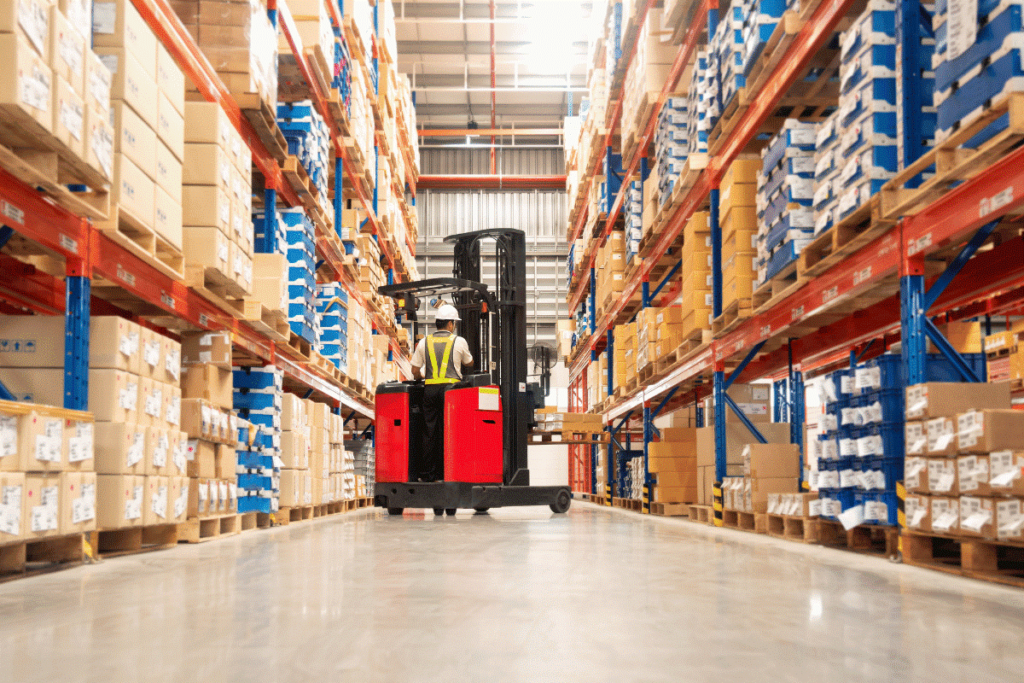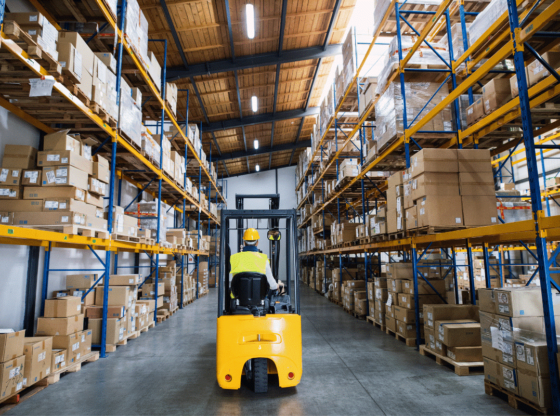Warehouse logistics operations are the heartbeat of efficient supply chain management, but ensuring the safety of personnel and the smooth functioning of processes is paramount. Warehouse logistics solutions help improve efficiency, accuracy, and productivity and also help reduce costs.
Implementing Safety Measures in the Warehouse
How would you implement safety measures in the warehouse?
- Employee Training Programs: Start with comprehensive training programs for all warehouse staff. This includes safety protocols, equipment operation guidelines, and emergency procedures.
- Regular Safety Audits: Conduct routine safety audits to identify potential hazards. This proactive approach allows for the prompt correction of any unsafe conditions.
- Proper Signage and Markings: Mark pathways, loading zones, and hazardous areas with appropriate signage. This helps prevent accidents and ensure a smooth flow of operations.
- Personal Protective Equipment (PPE): Mandate appropriate PPE such as safety helmets, reflective vests, and steel-toed boots based on the specific tasks performed by warehouse personnel.
- Equipment Maintenance: Regularly inspect and maintain warehouse equipment, including forklifts, conveyor systems, and pallet racks. Ensuring that equipment is in top condition reduces the risk of malfunctions.
- Emergency Response Plan: Develop and regularly rehearse an emergency response plan. This includes evacuation procedures, first aid stations, and emergency communication protocols.
Best Practices in Warehouse Logistics
Which of the following are best practices in the warehouse?
- Optimized Layout and Organization: Arrange the warehouse layout for maximum efficiency, ensuring that items are stored logically and that high-demand things are easily accessible.
- Inventory Management Systems: Implement advanced inventory management systems to track and manage stock levels efficiently, reducing the likelihood of overstocking or stockouts.
- Automation and Technology Integration: Embrace warehouse automation technologies, such as RFID systems and warehouse management software, to enhance accuracy, reduce errors, and streamline operations.
- Regular Performance Analysis: Continuously analyze warehouse performance metrics to identify areas for improvement and implement strategies to enhance overall efficiency.
- Cross-Training of Employees: Cross-train employees to handle multiple tasks, ensuring flexibility and adaptability in response to changing demands.
- Sustainable Practices: Adopt sustainable practices in warehouse operations, including energy-efficient lighting, eco-friendly packaging, and waste reduction initiatives.
Safety Projects for Warehouse
What are the safety projects for the warehouse?
- Automated Guided Vehicles (AGVs): Implementing AGVs for material handling reduces the need for manual transport, minimizing the risk of accidents and injuries.
- Fall Protection Systems: Install fall protection systems, such as guardrails and safety nets, to prevent accidents in elevated areas like mezzanines and loading docks.
- Fire Safety Projects: Develop and implement robust fire safety projects, including the installation of fire suppression systems, regular fire drills, and the presence of firefighting equipment.
- Digital Surveillance Systems: Upgrade to advanced digital surveillance systems to enhance security and monitor employee activities and potential external threats.

Importance of Safety and Security in Warehousing Operations
Why is safety and security important in warehousing operations?
- Employee Well-being: Ensuring the safety of warehouse personnel contributes to a positive work environment, reduces accidents, and minimizes the risk of injuries.
- Operational Continuity: Safety measures and security protocols safeguard against disruptions, ensuring warehouse operations continue smoothly without interruptions.
- Compliance with Regulations: Adhering to safety and security standards ensures compliance with local and international regulations, preventing legal issues and penalties.
- Protecting Assets and Inventory: Security measures safeguard valuable assets and inventory from theft, damage, or unauthorized access, preserving the financial stability of the business.
In conclusion, prioritizing safety and implementing best practices in warehouse logistics operations is not just a legal requirement; it is a strategic imperative for the success of any business. By investing in safety measures, adopting best practices, and embracing innovative safety projects, warehouses can create a secure environment that promotes efficiency, employee well-being, and the overall resilience of the supply chain.
For comprehensive warehouse logistics solutions that prioritize safety and efficiency, explore Kanoo Machinery’s Warehouse Logistics Solutions. Their expertise in materials handling equipment ensures a reliable foundation for safe and optimized warehouse operations.



















